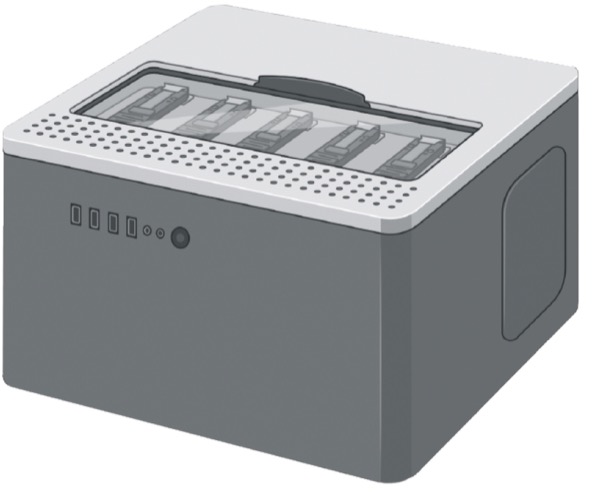In patients undergoing pancreatic head resection, organisms identified from intraoperative bile duct cultures correlate with postoperative infection, which is a major source of morbidity. Data suggest tailored perioperative antimicrobial therapy based on bile duct cultures decreases infection rates; however, standard cultures take days to produce results. New research shows that novel metagenomic techniques using nanopore sequencing can provide robust microbial profile data in just hours.
“We can use nanopore sequencing technology to improve our antibiotic stewardship and tailor antibiotic delivery to patients,” said lead study author Jennifer Yonkus, MD, a general surgery resident at Mayo Clinic in Rochester, Minn.
Researchers collected bile duct fluid from 41 patients undergoing pancreatic head resection and sent it for both standard culture and nanopore sequencing for microbial profiling. The results were presented at the 2021 joint annual meeting of the Central Surgical Association/Midwest Surgical Association (abstract 22).
“The nanopore sequencing involves extraction of the total DNA from a sample and then you deplete the host DNA and amplify the microbial DNA,” Dr. Yonkus explained. “You then take that microbial DNA and you sequence it on a nanopore sequencer. Then you take all those genes and you compare it back to a genomic library, which allows you to identify a wide variety of pathogenic bacterial organisms and their anticipated antibiotic sensitivity or resistance.”
De-identified results of both tests were provided to a surgical clinical pharmacist and an infectious disease physician for antibiotic recommendations. Time to results was defined as time from sample acquisition to either final standard culture or nanopore sequencing results.
Roughly half (52%) of the samples from patients came back as positive in standard cultures, and all patients (100%) had organisms detected using nanopore sequencing. On average, nanopore sequencing detected twice as many bacterial species compared with standard culture (10.5 vs. 4.4; P<0.05). Resistance genes were screened using nanopore sequencing in the 22 positive samples, with a mean of 6.4 genes being detected. The predicted resistance phenotypes were significantly greater from nanopore sequencing than using standard cultures (10.3 vs. 2.7; P<0.05). Antimicrobial recommendations for nanopore sequencing provided coverage for standard culture results in 61% of samples. Using the nanopore sequencing technology was significantly faster than standard cultures (median time to results, eight vs. 165 hours) but came at a higher cost ($165 vs. $38.49). “That really is a nominal increase if you consider the cost of one surgical site infection is up to $30,000 or can, even worse, cost a patient their life,” Dr. Yonkus said.
Nanopore sequencing also provided a perfect negative predictive value. “In all patients who had no growth on standard cultures, they also had no growth detected using nanopore sequencing,” she said. “So, all of those patients, about half, could have discontinued their prolonged course of antibiotic prophylaxis on postoperative day 1. That makes up for the additional cost of the assay, the extra days of unnecessary antibiotics, and it also prevents the known complications associated with prolonged antibiotic administration.”
The researchers say because microbiome metagenomics may prove to be applicable to all body fluid samples (blood, urine, etc.), nanopore sequencing may have a major impact on diagnosis and treatment of all surgical site infections. Dr. Yonkus and her colleagues are in the process of planning a randomized controlled trial of the nanopore sequencing for patients undergoing pancreatic head resection.
Asked to comment on the study, Nicholas Zyromski, MD, a professor of surgery at Indiana University School of Medicine, in Indianapolis, said it’s significant. “Bacteria in the biliary system is very important in pancreatic and biliary surgery. What we know is that when the bile duct undergoes instrumentation, which it almost always does for patients who have cancers in the head of the pancreas or cancers that are blocking the bile duct, the bile that needs to be instrumented is contaminated with bacteria typically from the intestinal system. What that leads to when we operate is an increased incidence of infection.
“So, the ability to diagnose the type of bacteria quickly would be a major advantage. When we suspect an infection, we typically prescribe a broad-spectrum antibiotic, and when the bacteria is isolated, we can narrow the spectrum of antibiotics. This technology allows the narrowing of the bacteria coverage quite a bit earlier and potentially cuts down the development of resistant bacteria.”
Dr. Zyromski said the study was potentially practice-shifting methodology to diagnose infections, but the technology was not yet widely available. “The study was done in the bile ducts, but this could be potentially used in a number of other body systems,” he added.

